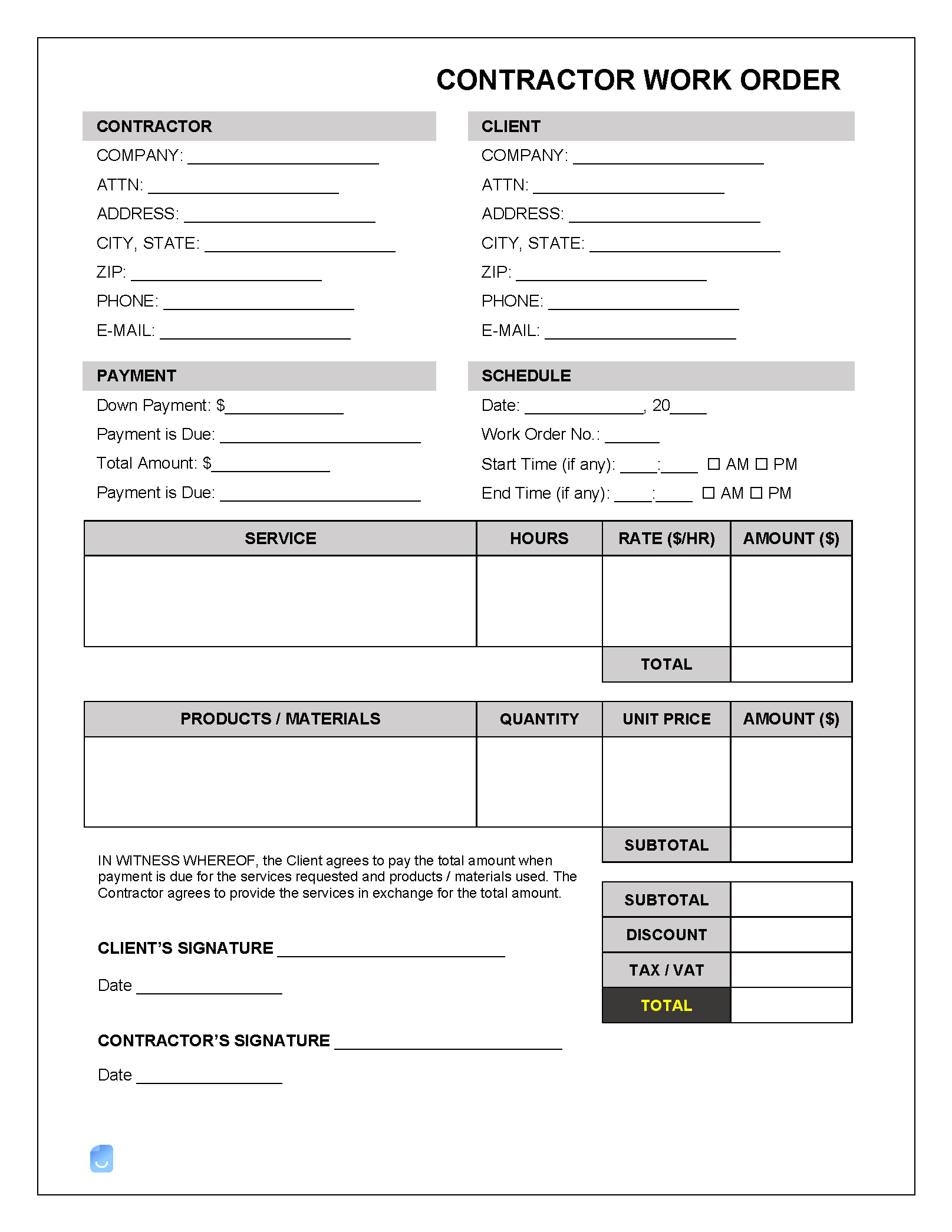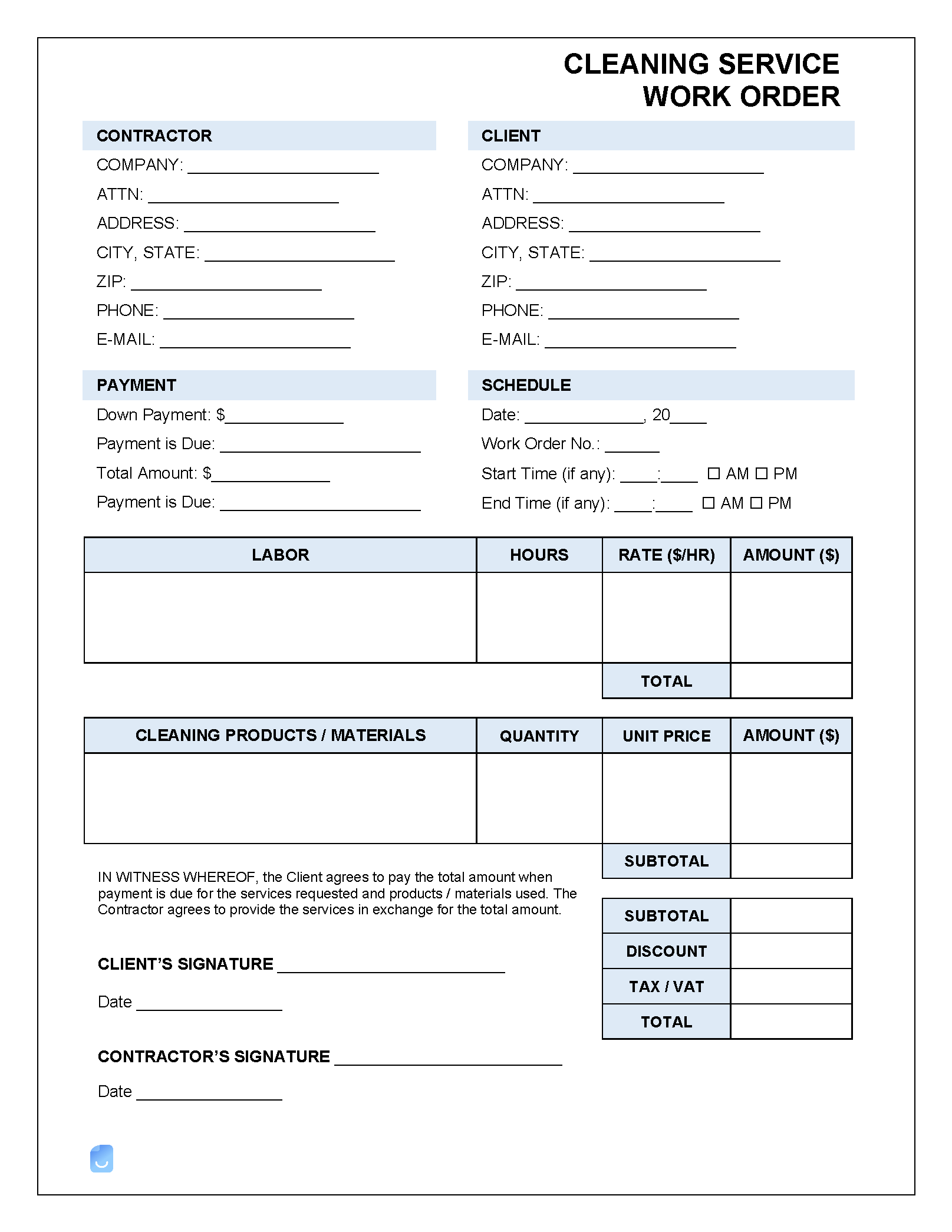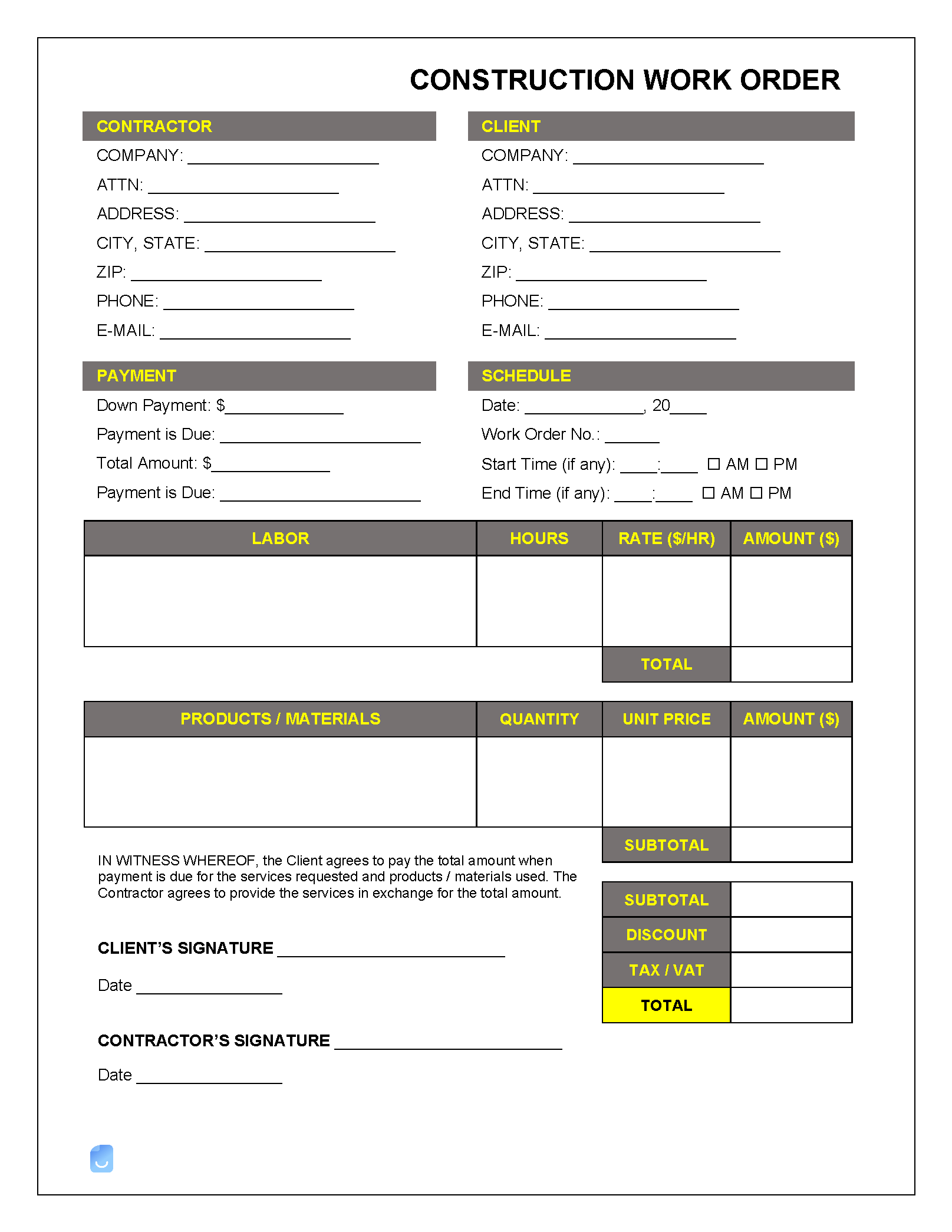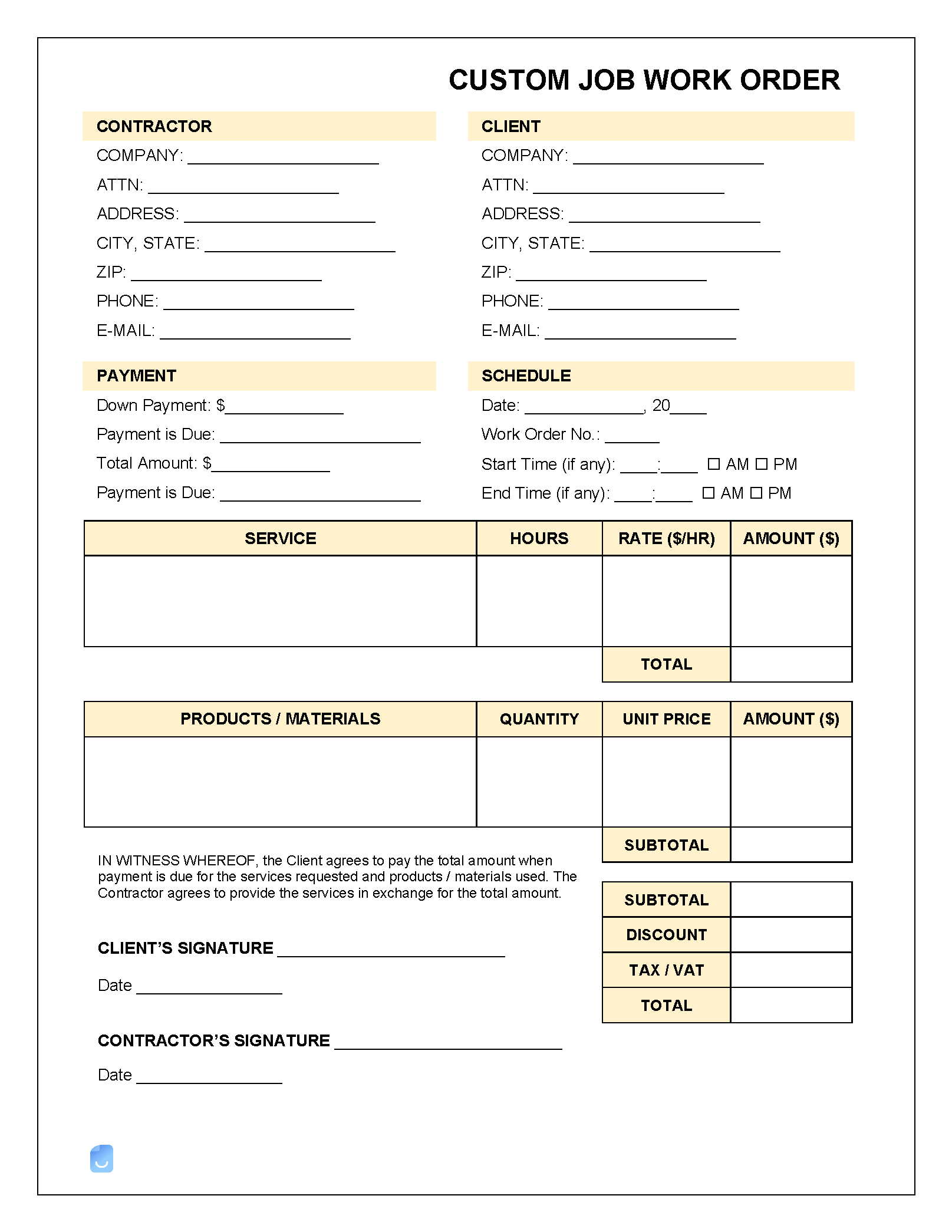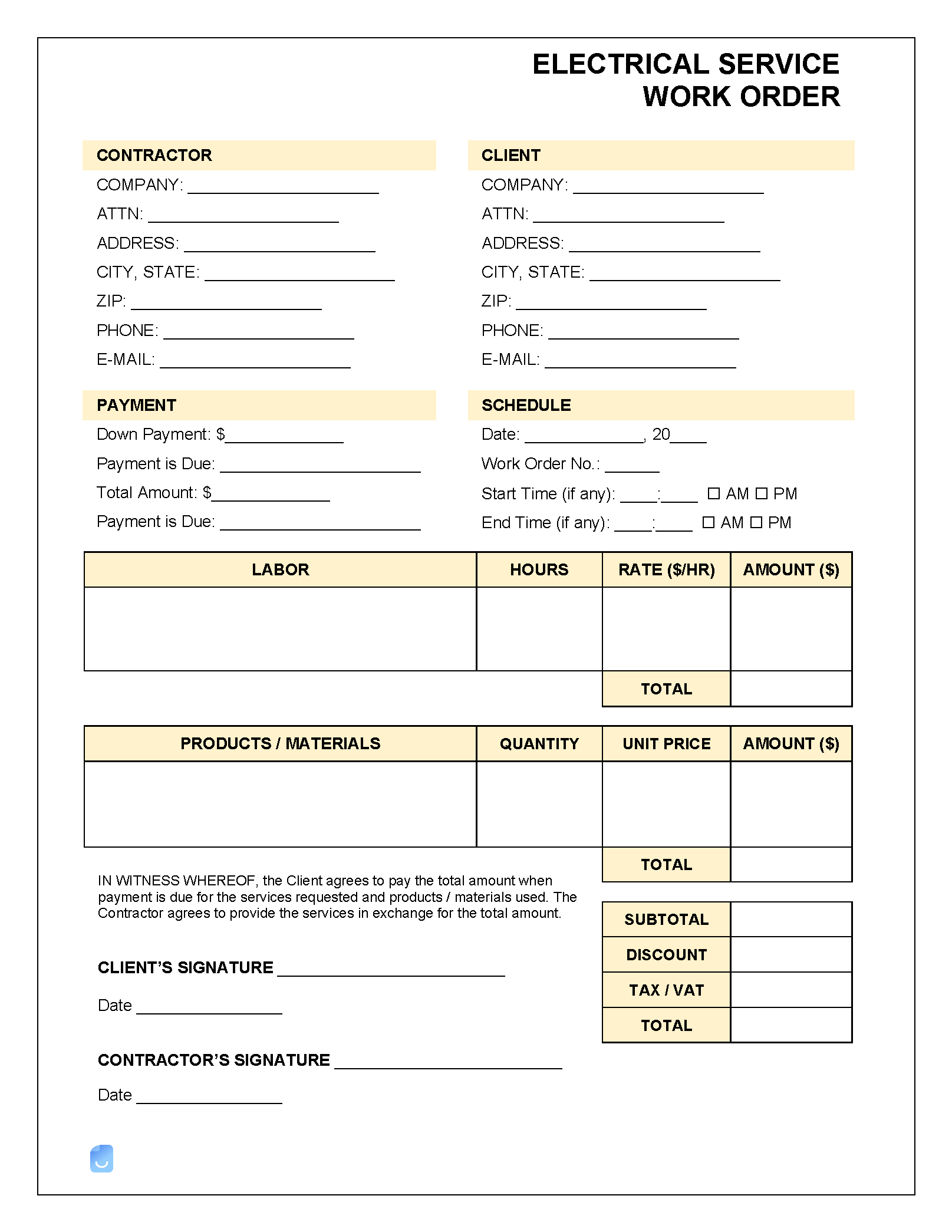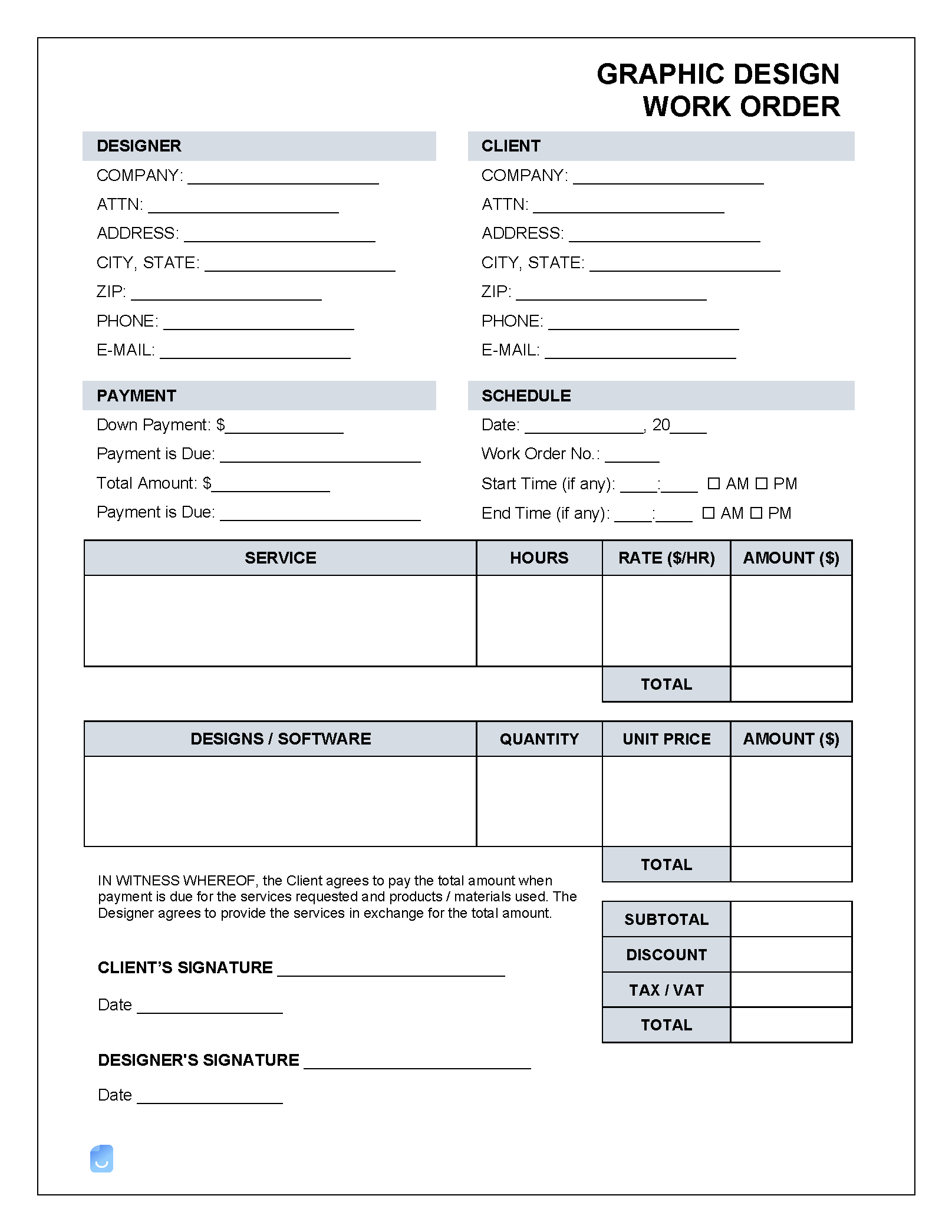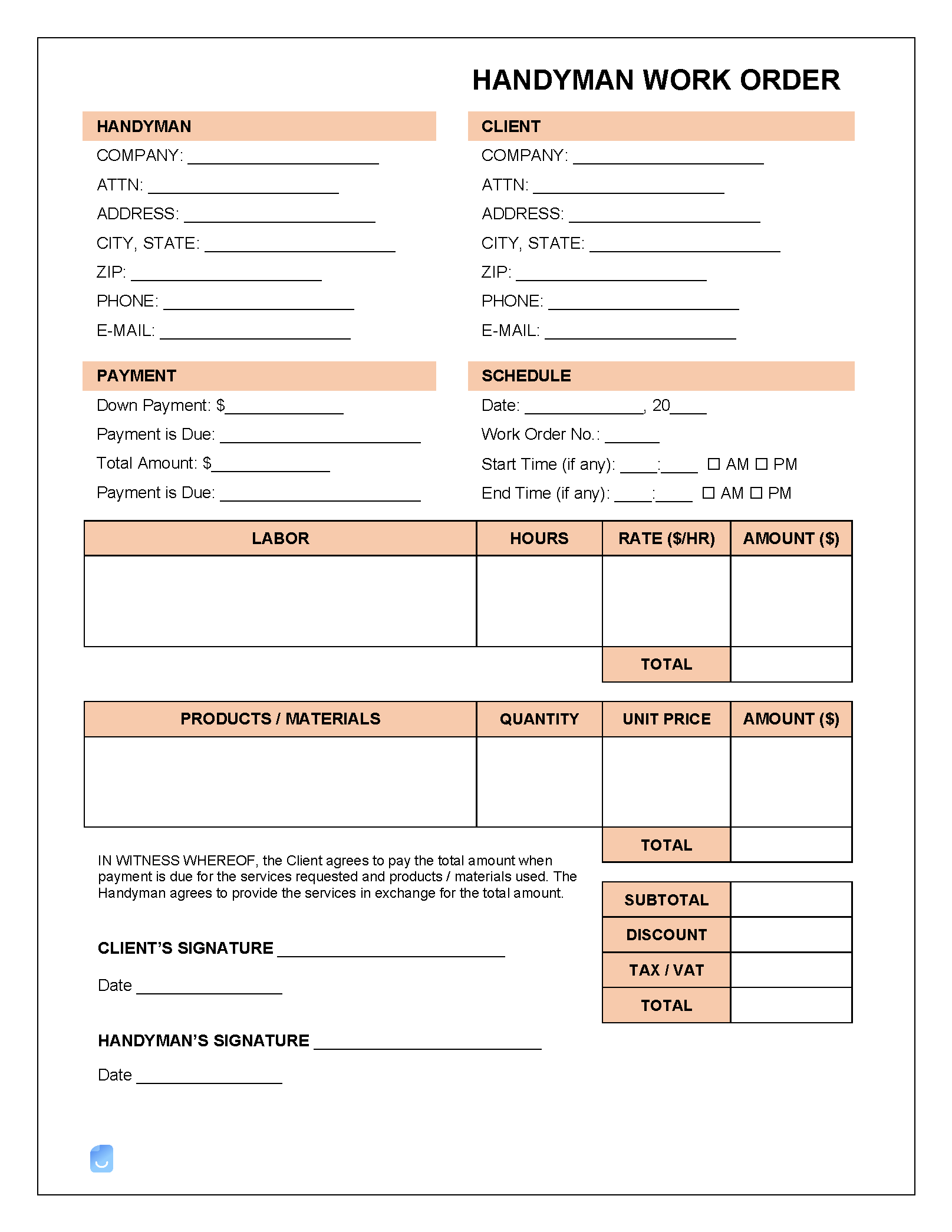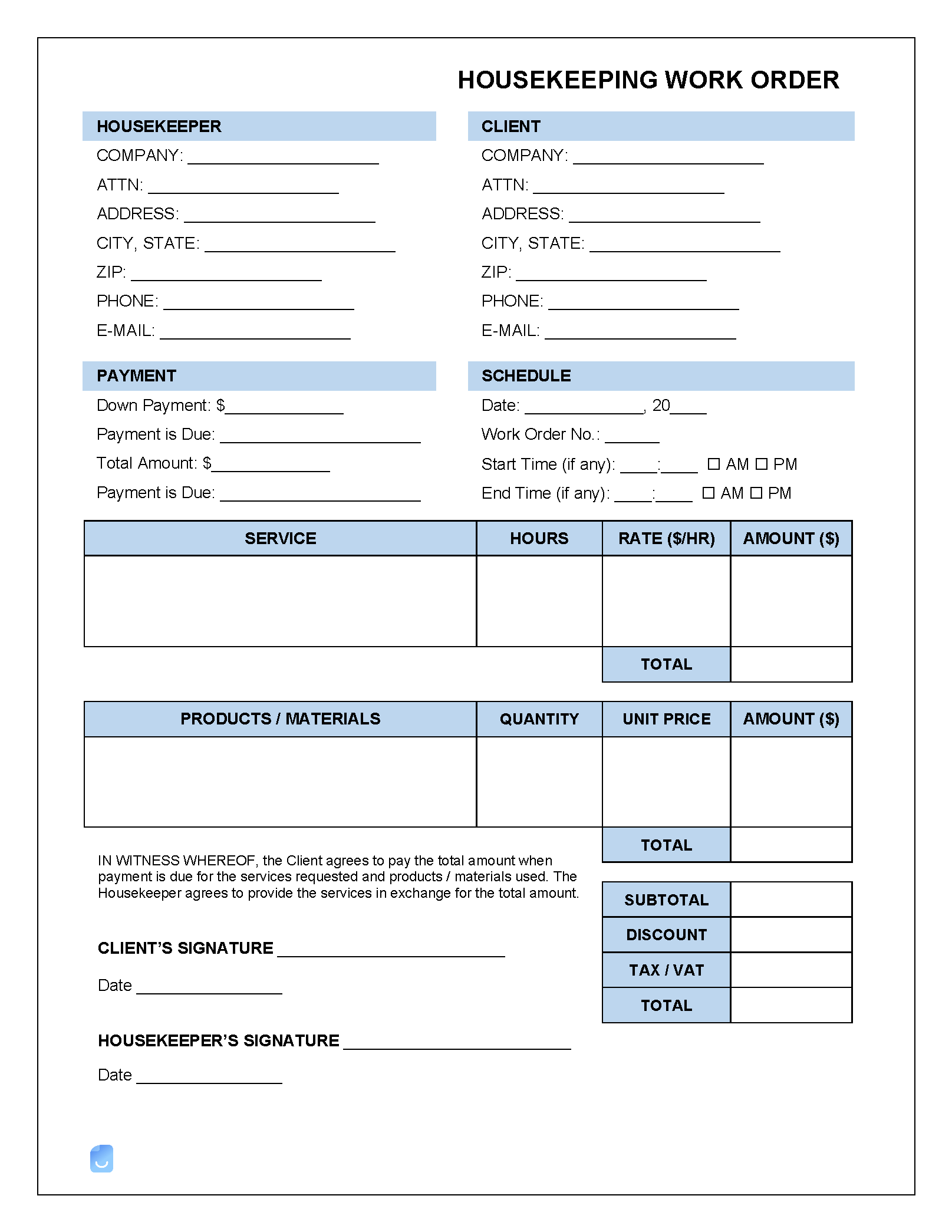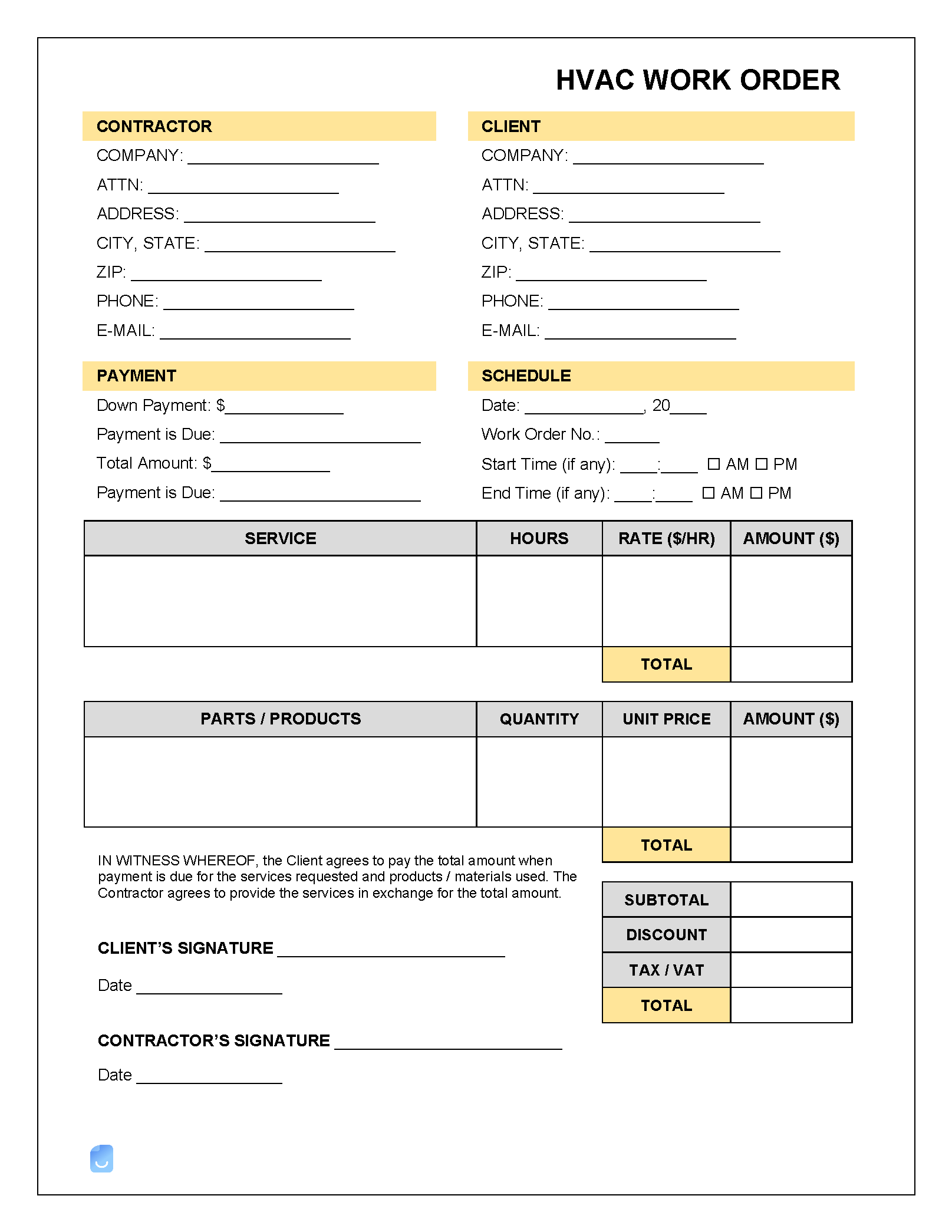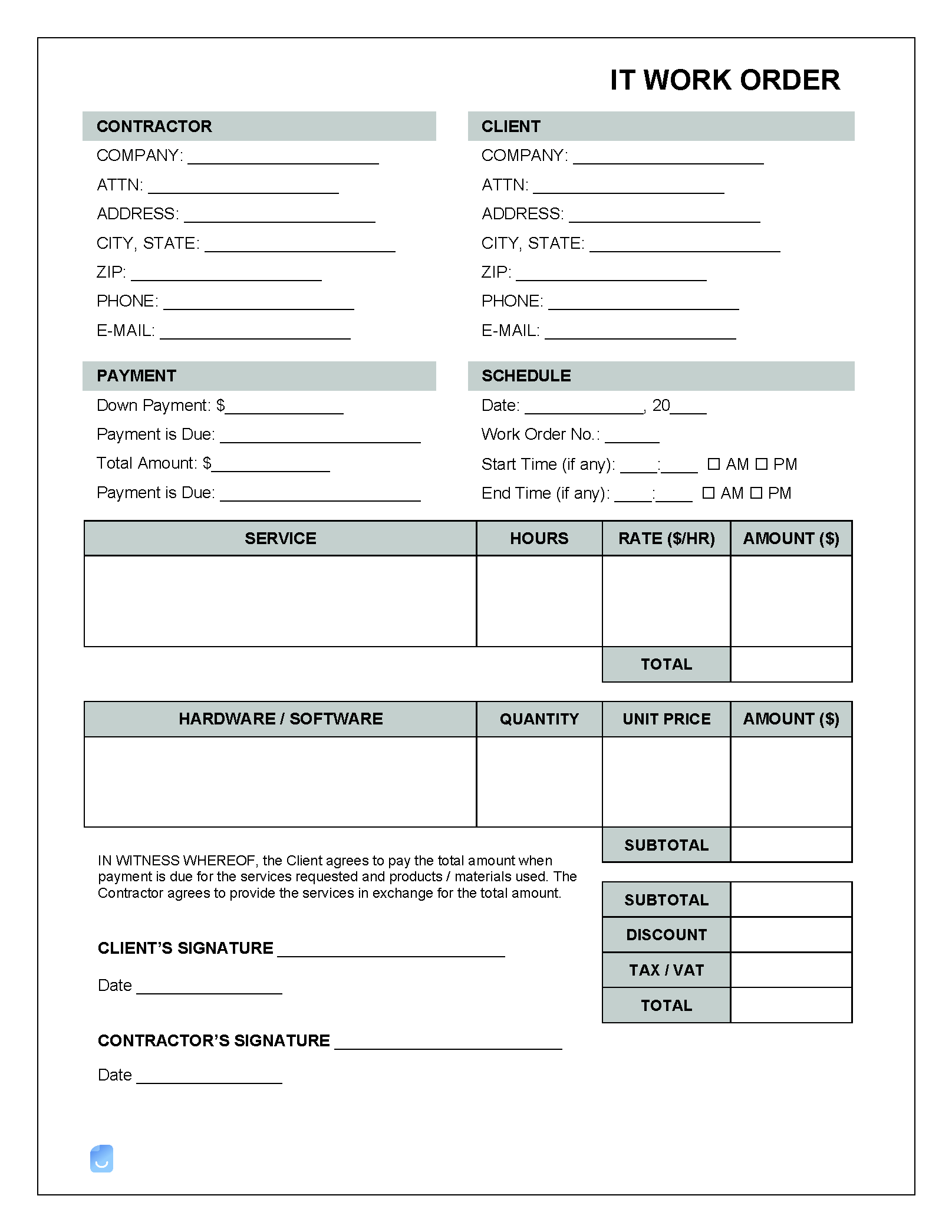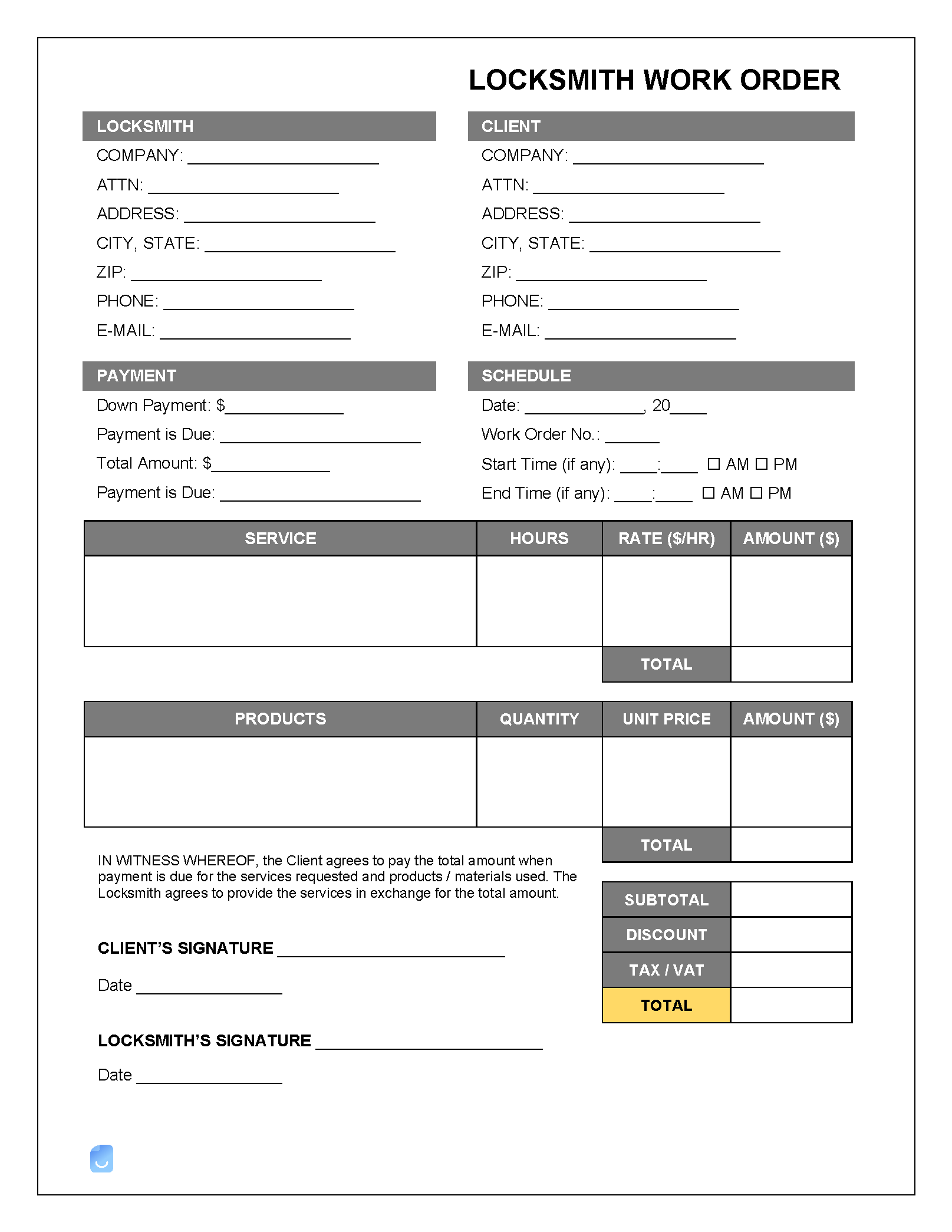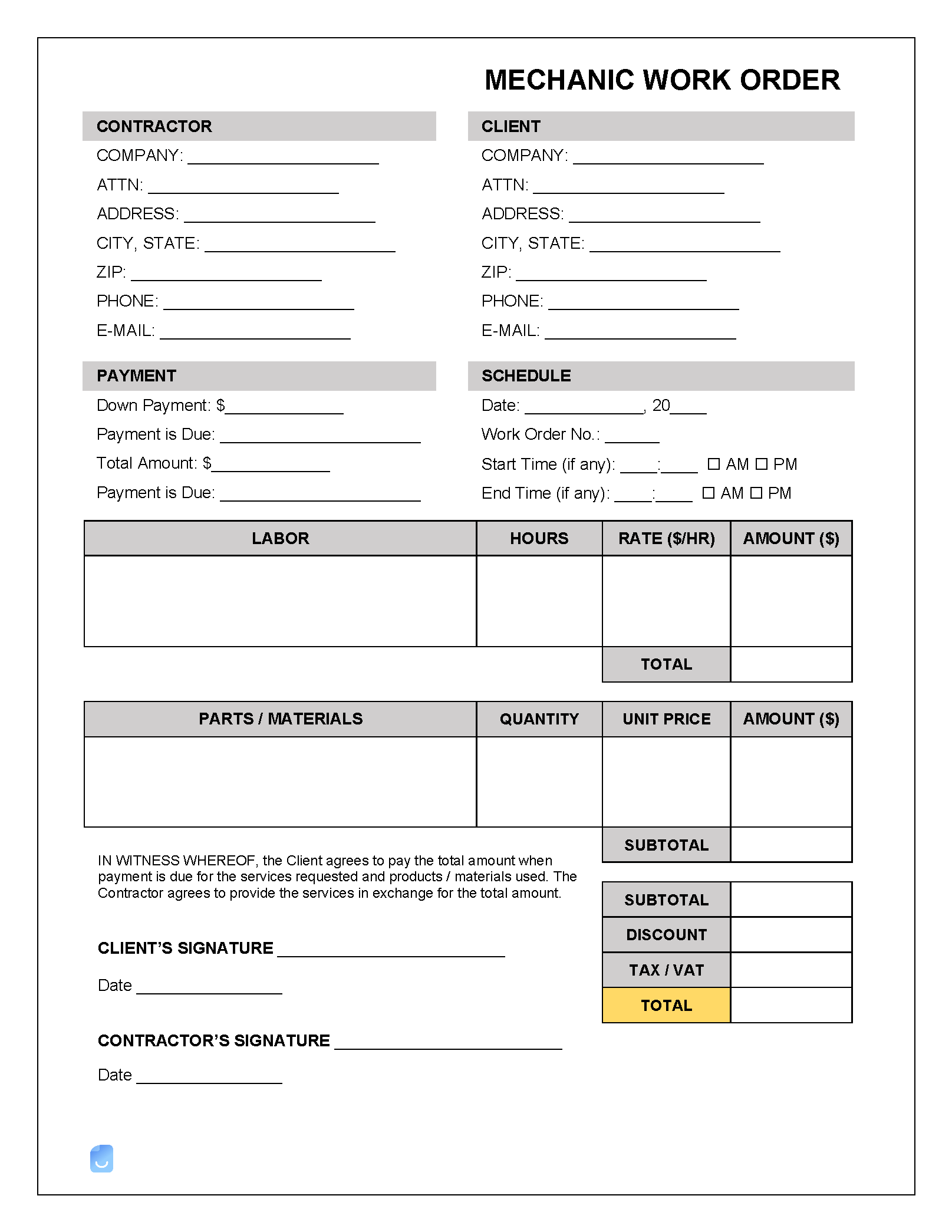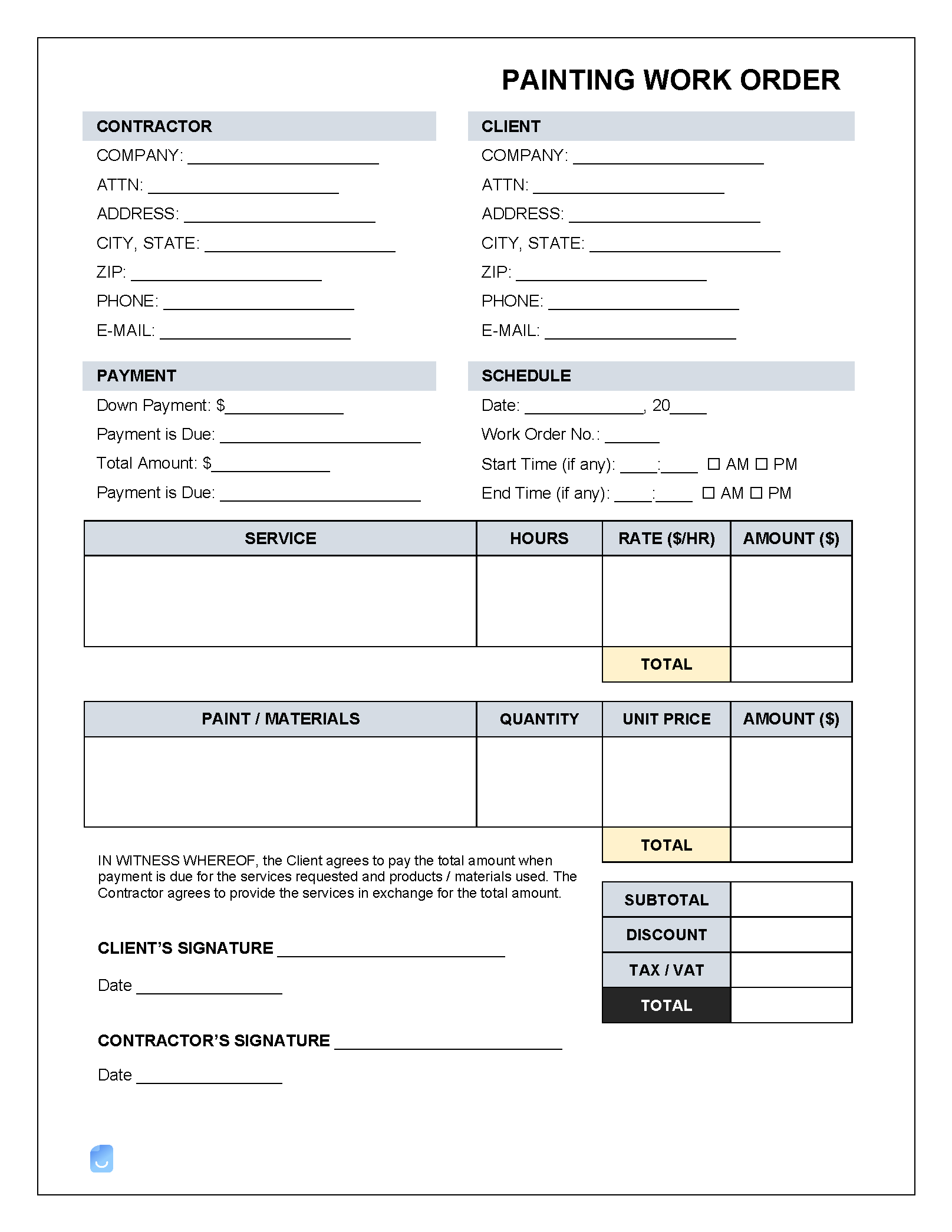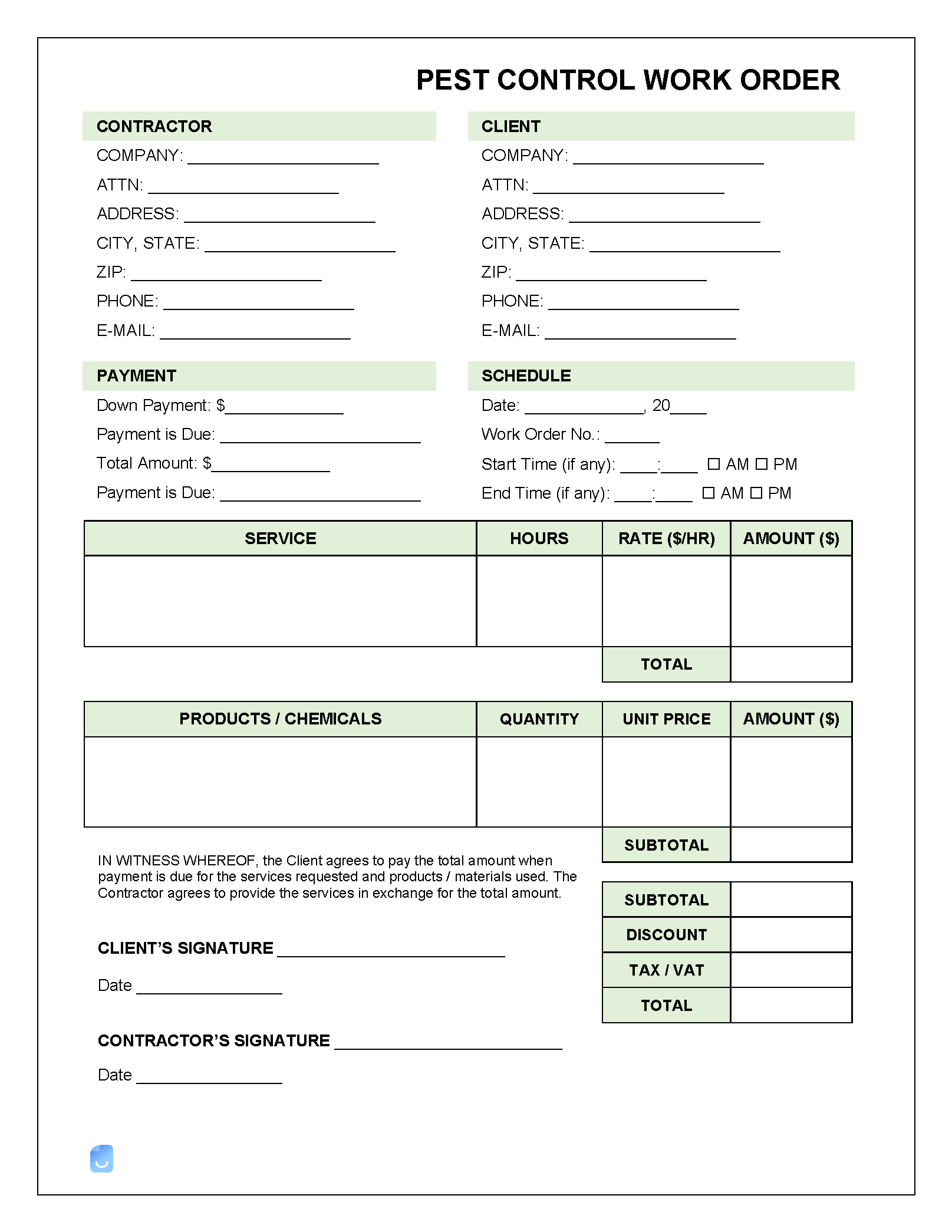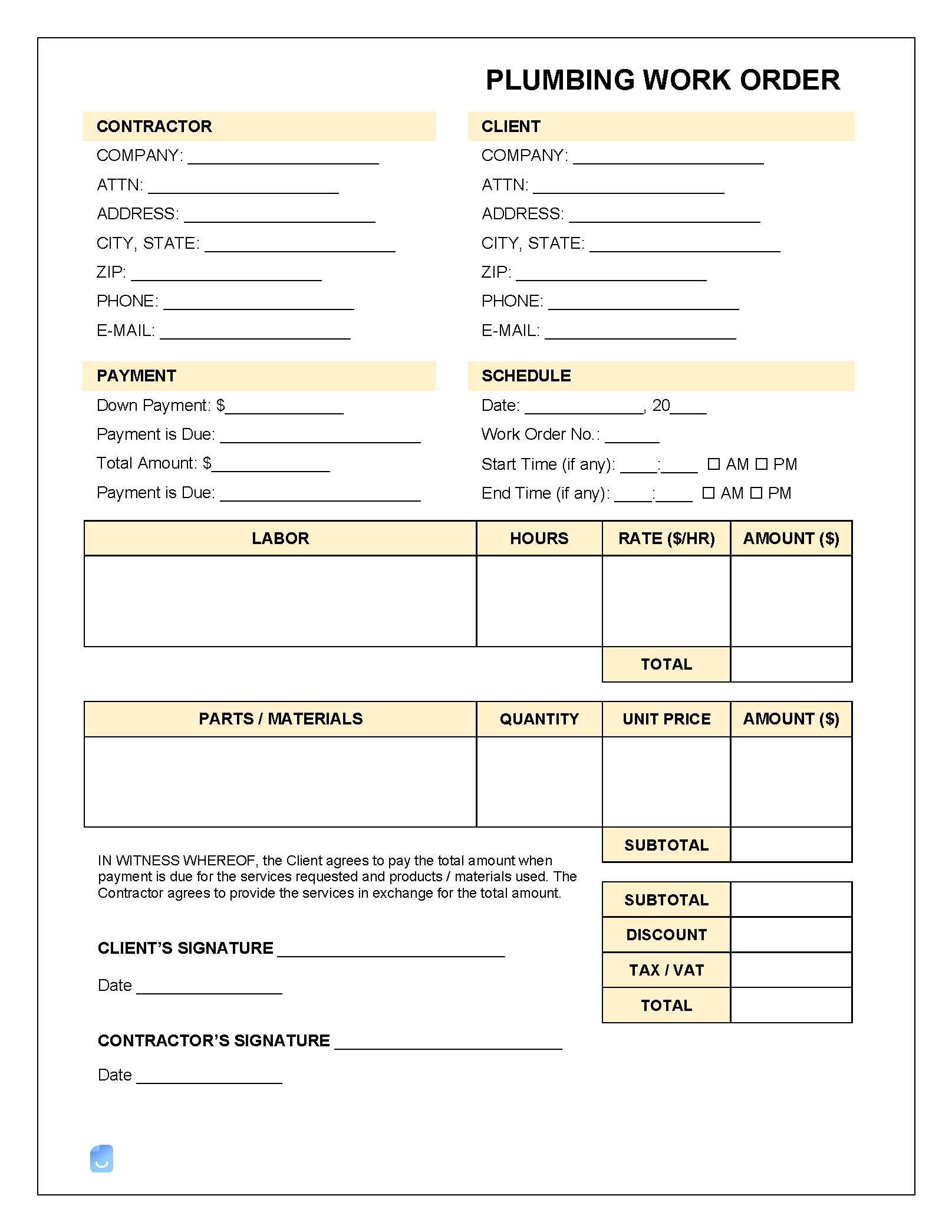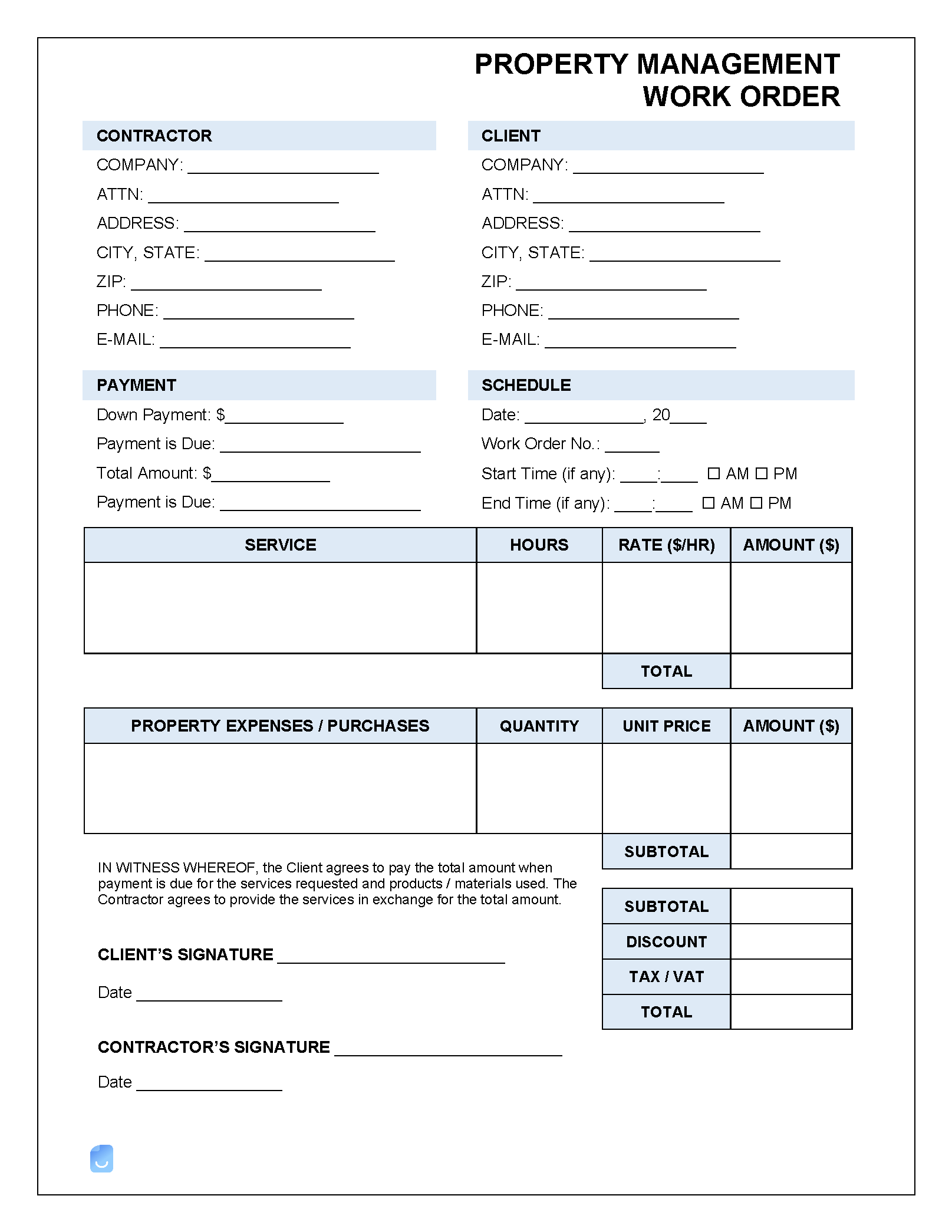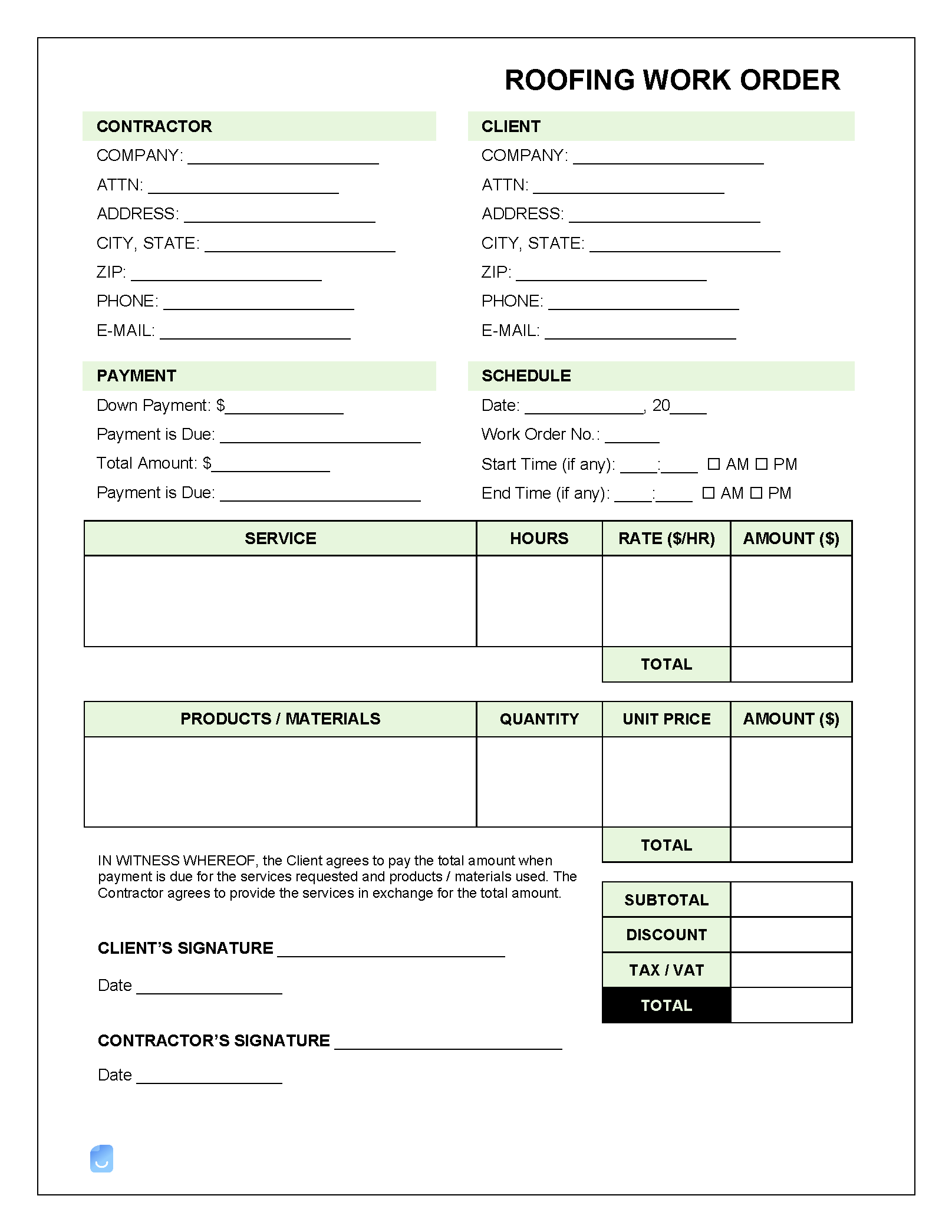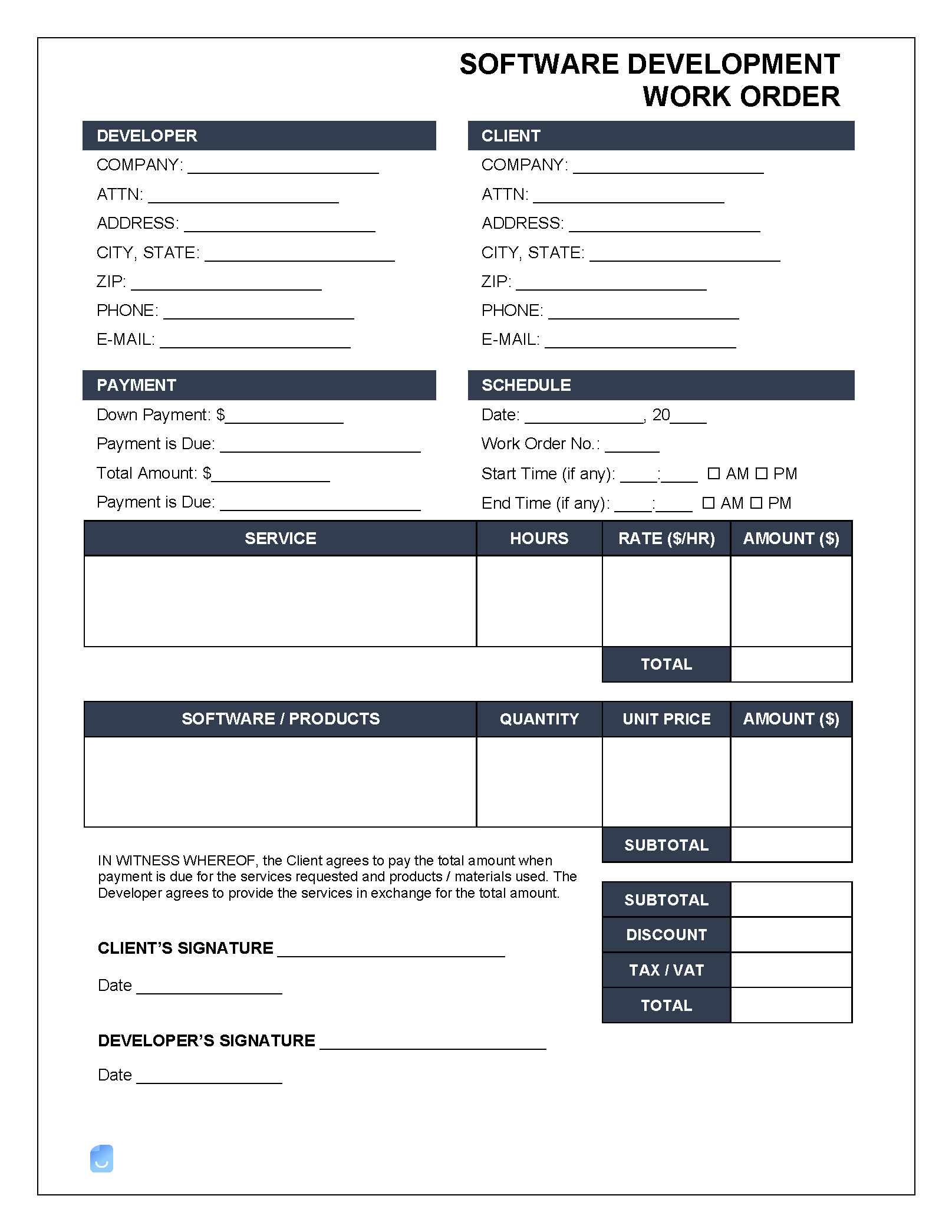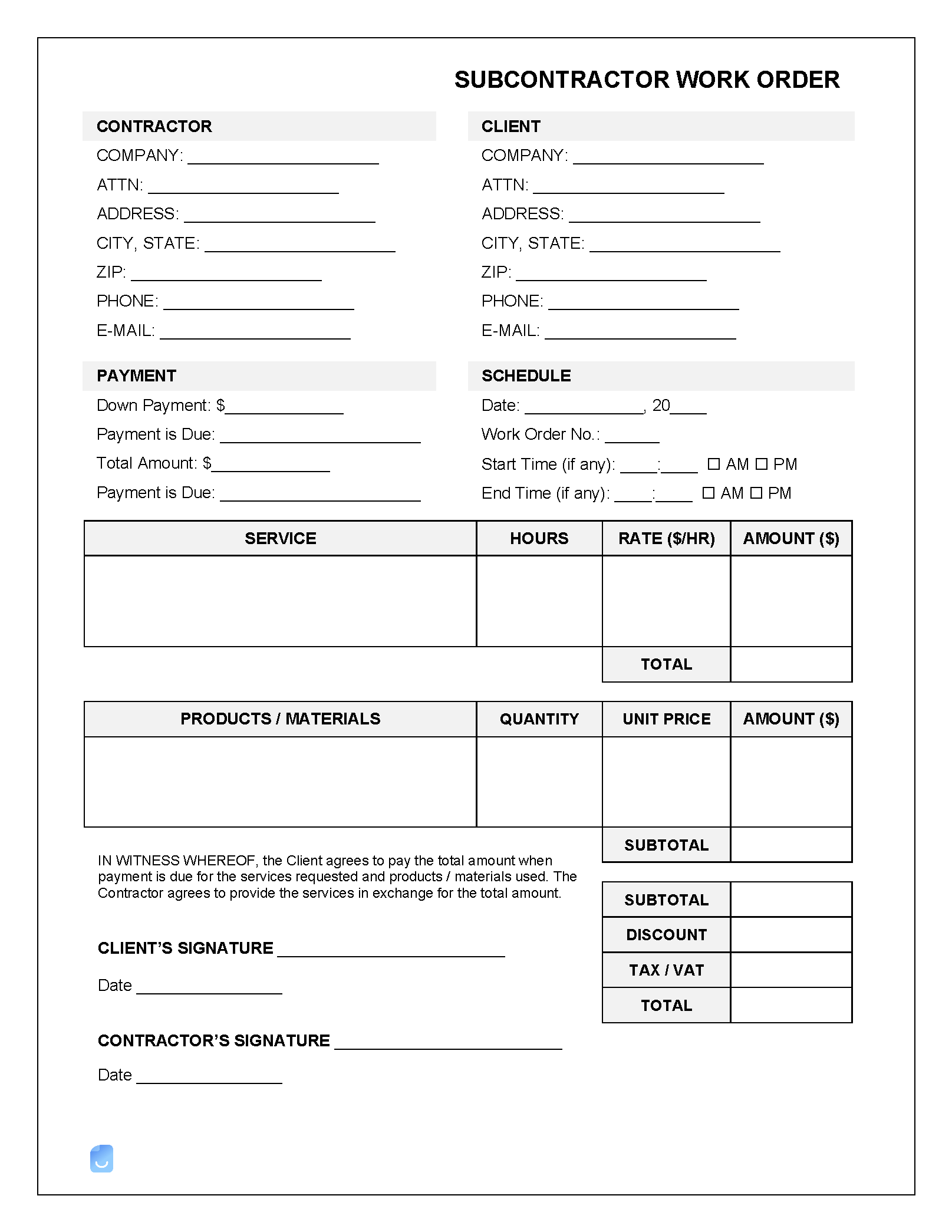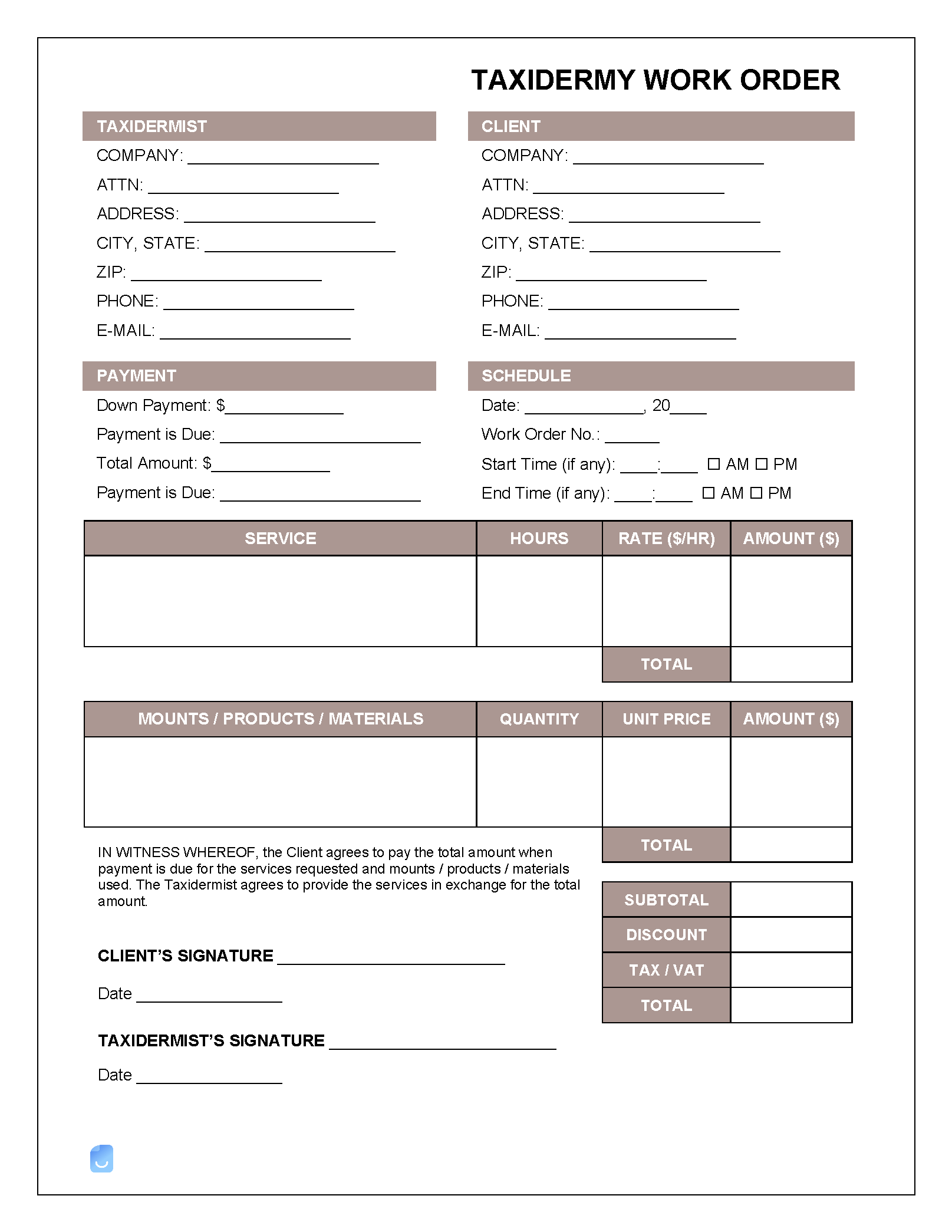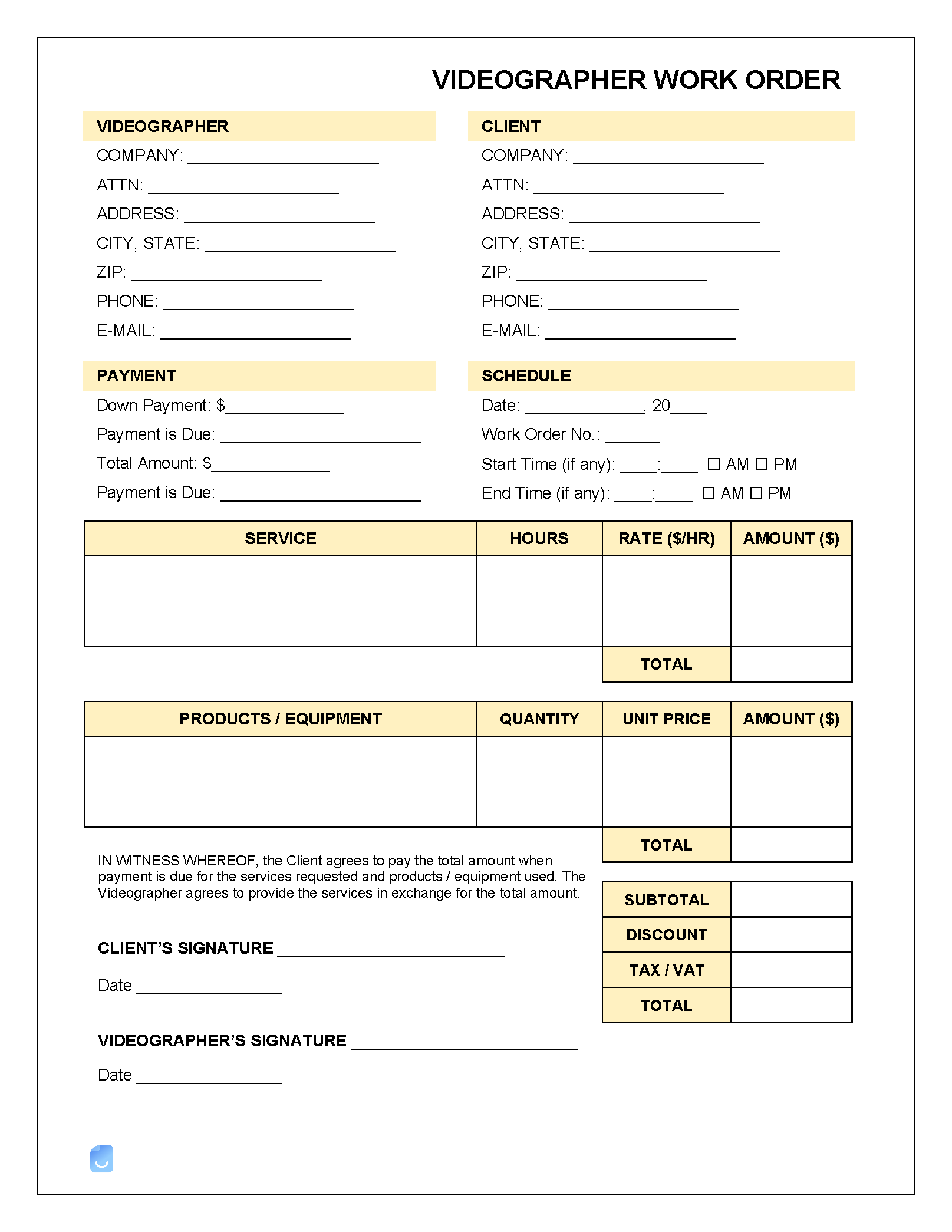Contractor Work Order Templates (24)
A contractor work order is used to show a client an estimate ($) of services to be completed. It should include a calculated amount of materials and services that are required to complete the project. Depending on the agreement between contractor and client, the work order may be financially binding, meaning, the contractor will be liable to complete the project in accordance with the budget provided and the client will be required to pay upon its completion.
By Type (24)
Contractor Work Order Format (3 parts)
A contractor can be any type of company or service hired to perform a job. Contractors need a system in which they can communicate with the employer and their own employees. A work order, if done right, can help jobs be done in an efficient way. Therefore, the format in which the work order is written is very important.
Step 1 – Choose a Pre-Existing Template
A contractor’s work order must match, or have fillable fields catered to what their business offers. A contractor that provides a service vs a contractor that provides a product will have two very different work orders. It may even be necessary to have multiple work order templates depending on the range in offerings of the contractor. The best way to begin using any type of contractor work order to select a preexisting template covering your basic needs.
Step 2 – Customize the Work Order
Not every template will be perfect. With our contractor work order templates, you are able to download in both Word and Excel which will allow you to delete or add to the work order as needed.
Step 3 – Approval
Whether it’s the owner, boss, or manager, a work order should be approved with a signature by the person authorized to do so. Every work order should include a request for approval.
Related
- Additional (Extra) Work Order – If any add-ons, additional or extra work requested, an amendment should be made to reflect the changes.
- Contractor Invoice – To bill the client and request payment for services and materials provided. May be used for installments or final payment after work has been delivered.
